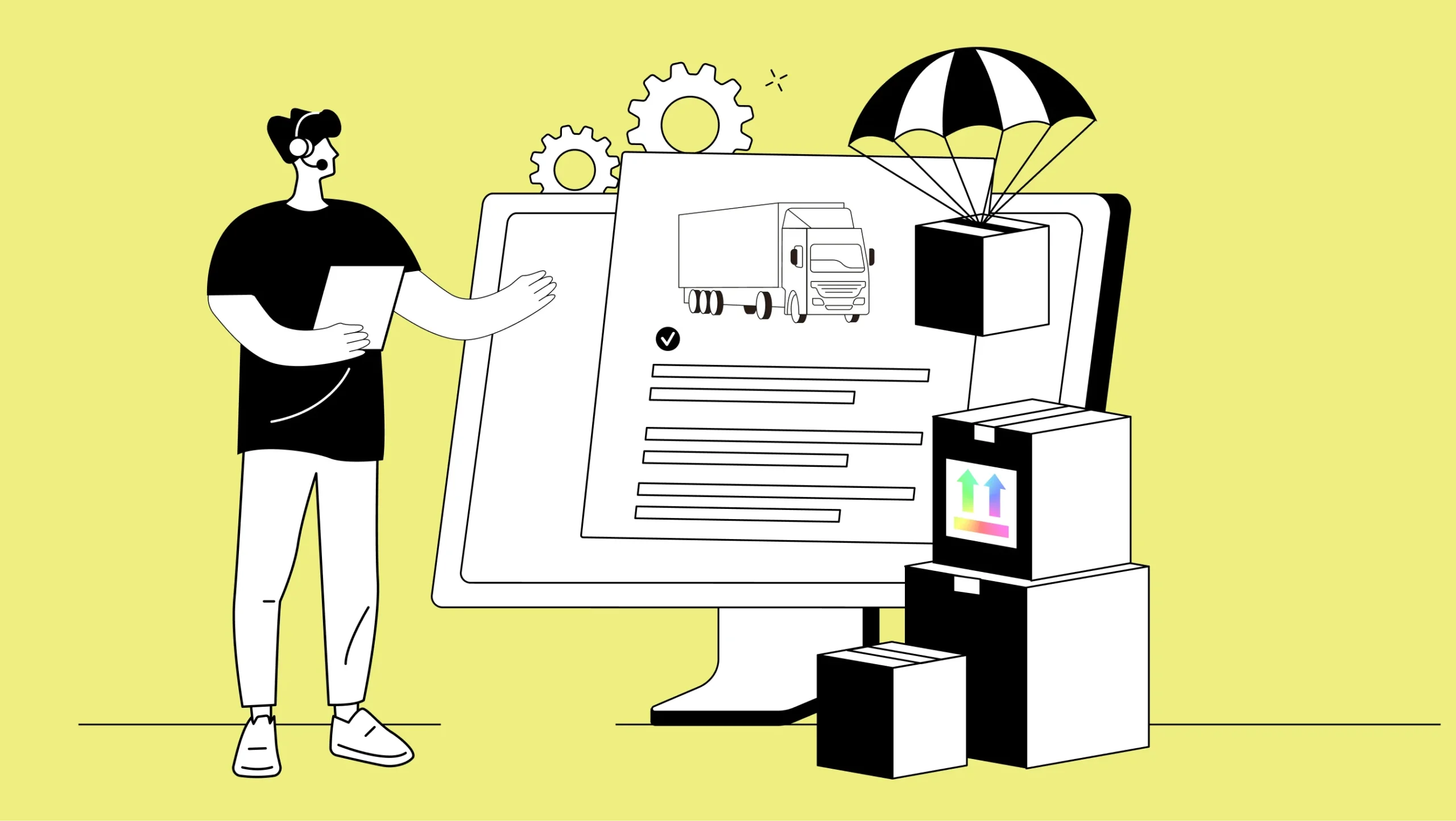
In a world where everything is moving at a fast pace, a business owner has to wear many hats. From sales and marketing to product development and customer service, there never seem to be enough hours in the day. That’s why many businesses turn to third-party logistics (3PL) providers for help managing their supply chain.
In simple terms, 3PL is when a business outsources all or part of its logistics operations to a third-party provider. This can include everything from warehousing and transportation to order fulfillment and inventory management. By partnering with a 3PL provider, businesses can reduce their operational costs and focus on what they do best – growing their business.


The world of logistics has recently introduced a new concept called Fifth-Party Logistics (5PL), which refers to the use of an external party to manage and coordinate the entire logistics network on behalf of the client. These providers act as consultants and offer end-to-end solutions for managing and optimizing their clients’ supply chains.
3PL plays a vital role in supply chain management by providing specialised services to improve the efficiency, flexibility and profitability of supply chain operations. Here are some key areas that illustrate how 3PL can assist in different stages and segments of the supply chain:
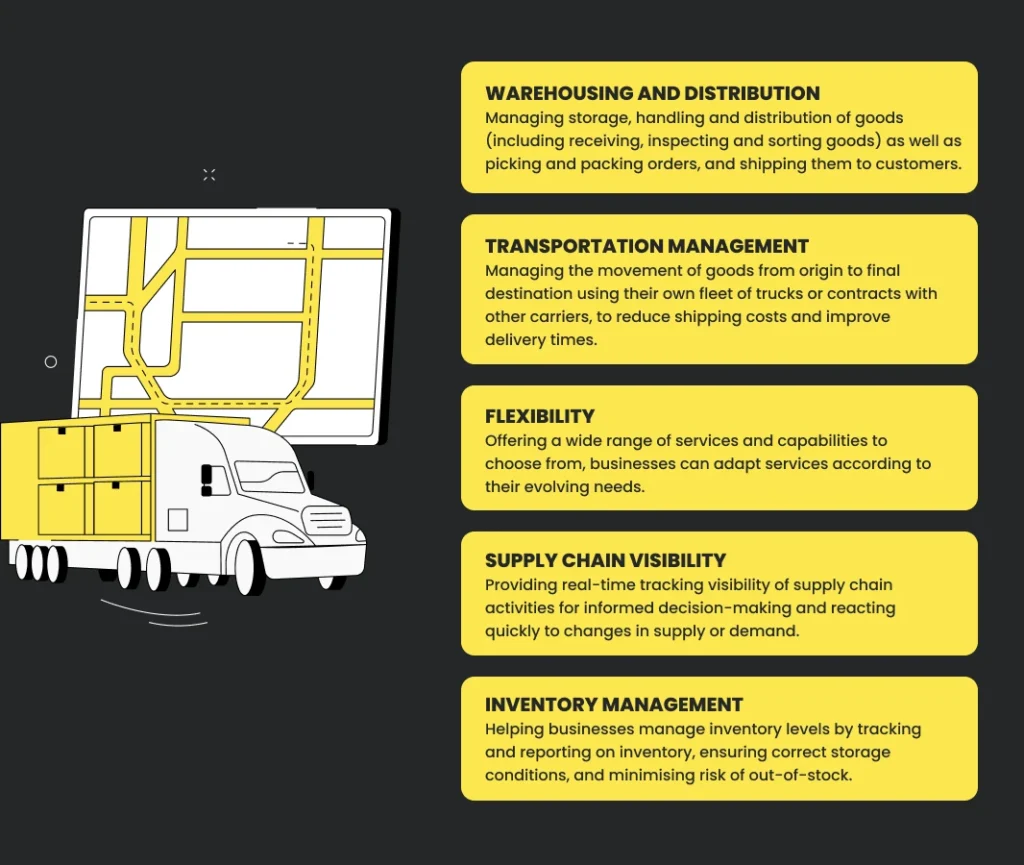
3PL providers leverage a combination of technology, systems, and devices to streamline their logistics operations, reduce costs, and enhance customer service. Some of the key tools and techniques used by 3PL providers are:
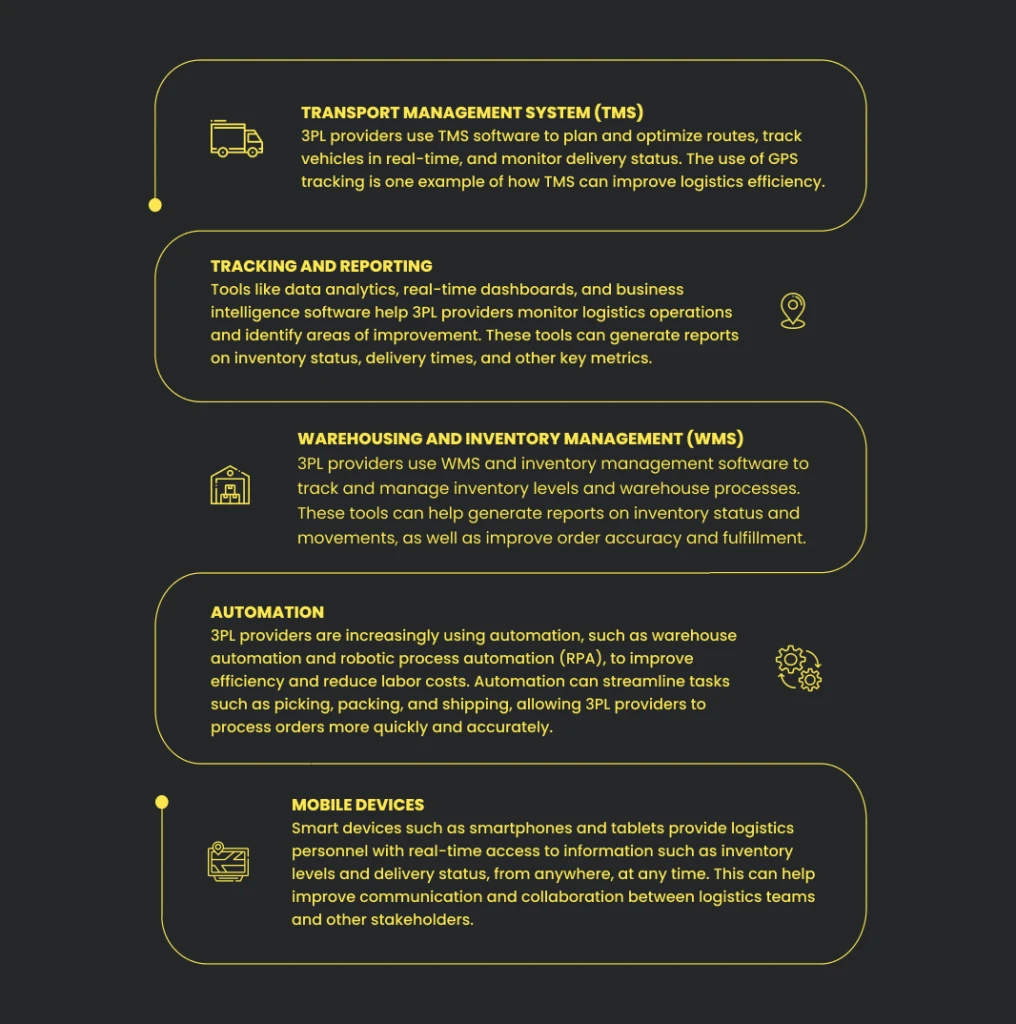
The 3PL (third-party logistics) industry is responsible for managing the movement of goods from one place to another on behalf of businesses. UX design can play a crucial role in improving the efficiency and effectiveness of 3PL operations through the following design suggestions for the 3PL industry:
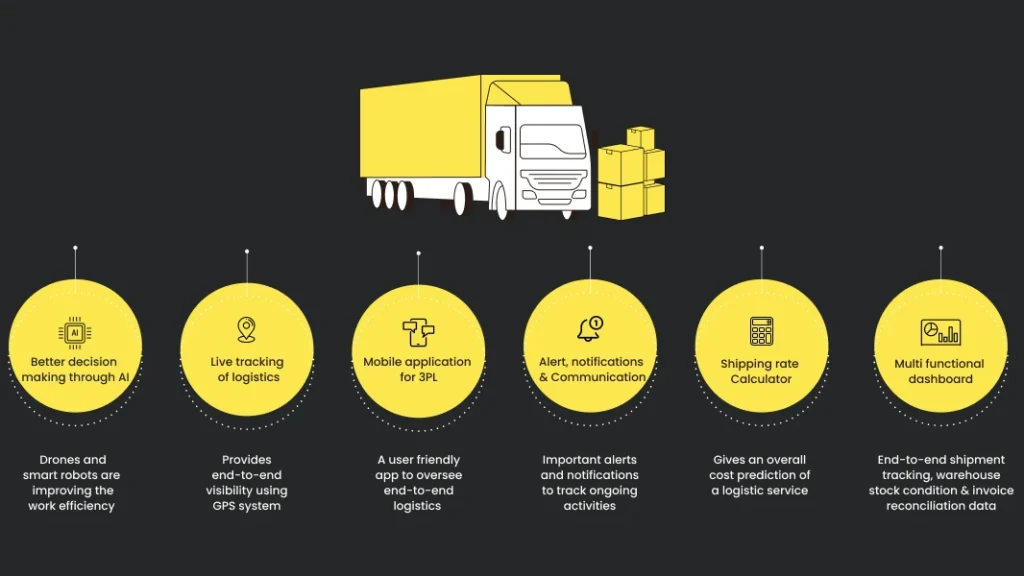
Fuel prices and other transportation costs are rising, which can increase the cost of logistics services.
To develop a set of tools that would enable 3PL providers to optimize their transportation operations and reduce costs. To achieve this goal, we propose to design route optimization tools that can minimize fuel consumption, reduce travel time, and enhance vehicle utilization.
Third-party logistics (3PL) companies handle thousands of orders on a daily basis, therefore manually tackling these orders can add to expenses and hamper deliveries. The best way to improve transport and logistics efficiency is through route optimization.
Route optimization helps fleet supervisors find the shortest, fastest, and most cost-effective routes for their vehicles, reducing costs, improving delivery times, and enhancing customer satisfaction.
Fleet drivers can reach the right customers at the right time by using AI-based route optimization software that helps in cutting down the logistics costs through the usage of a smart vehicle routing algorithm by
Manual delivery of 5k+ products will raise the operational cost of logistics while route optimization software automates and plans the route, hence reducing the cost-effectively. An efficiently designed route optimization software provides information on the Expected Time of Arrival (ETA) and immediate delivery status. The software automatically allocates, optimises and adjusts the ETA and routes in terms of delivery constraints like traffic and congestion.
The software is designed in a way that the dispatchers provide a clear input of tasks to get accurate results. This input will help drivers deliver the shipment and receive an invoice for it. Also, it can make a big difference in real time delivery of the right product and the right place.

Delivery agents are an important part of the logistics industry as the human effort increases the overall cost of a logistic operation. Hence, route optimization is the best solution for 3PL companies in different ways:
If you want to cover various delivery options, then you need an integrated and cohesive order fulfilment centre that can give you information about the current status of every product in the logistic. Route optimization helps your diverse delivery options in the following manners:
The logistics industry is facing a shortage of warehouse workers, which can lead to increased labour costs and difficulty in meeting customer demand.
By leveraging cloud-based technology to create a platform that seamlessly integrates with major robotic fleets and software systems, 3PLs can significantly increase automation in manufacturing plants and distribution centers. This can ultimately alleviate the shortage of warehouse workers in the logistics industry.

As e-commerce continues to grow, maintaining separate warehouses for retail and e-commerce orders can result in increased expenses and duplicated inventory. To address this challenge and reduce costs, 3PLs are integrating their warehouses and networks, gaining better inventory visibility, and streamlining their fulfilment processes to address staffing and retention challenges.
To meet modern fulfilment demand, 3PLs must keep up with the latest technology and systems, especially when labour is scarce. Automation is essential to handle fluctuating e-commerce volumes, global staffing changes, and rising labour costs. By implementing automation technologies, fulfilment centres can satisfy rising consumer demands, modernize their processes and workforce, and enable workers to manage high-volume fluctuations with greater ease and precision.
The 3PL industry is facing a significant labour shortage, and robotic fleets and software systems can help reduce dependence on human labour. Robotic fleets can automate several processes, such as picking and packing, which are typically carried out by human workers. By automating these processes, 3PL companies can reduce their dependence on human labour, lower recruitment and retention costs, and modernize their operations.
Time consuming long packaging process
The logistics industry is facing issues of higher packaging time before dispatching orders for deliveries.
Designing a unified platform that combines automation, standardisation, predictive analytics, multi-packing, and incentives all of which help in speeding up the packaging process and ensure that orders are processed quickly and efficiently.
Implementing automated packaging systems with user-friendly interfaces is an effective way to reduce packaging time in logistics. These systems create custom packaging for each order, reducing manual labour and increasing efficiency. User-friendly interfaces simplify the packing process, reducing human error and the need for extensive training. Overall, this solution optimizes packing processes, reduces labour costs, and enhances productivity in the logistics industry.
Optimizing the packing process by creating standardized procedures and leveraging technology can also reduce packaging time in logistics. For instance, using mobile devices to scan products and generate shipping labels can speed up the process and reduce errors. Employing barcoding or RFID technology to track inventory can also help ensure accurate packing and reduce the time spent searching for products.
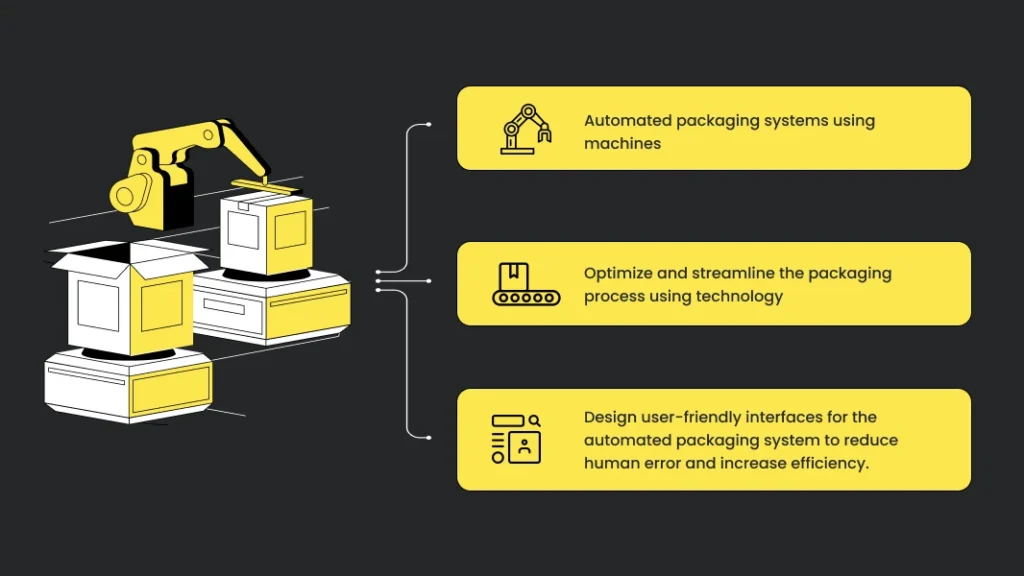
Amazon’s supply chain basically refers to storage , warehousing of the products, costing , inventory management, delivery and returns, etc. Amazon has enhanced each of these elements to ensure a seamless supply chain. With third-party sellers being responsible for 55% of all sales made on Amazon, Amazon offers two fulfilment options to sellers – Fulfilled by Amazon (FBA) and Fulfilled by Merchant (FBM).
Harsh working environments, crowded conditions, and multitasking can negatively impact productivity, employee satisfaction, and customer experience. To address these challenges, companies can invest in design solutions that prioritize safety, efficiency, and comfort. By creating a well-designed workspace, companies can improve productivity, reduce costs, and enhance customer satisfaction.
E-commerce companies can collaborate with logistics partners to optimize the supply chain and reduce shipping times. By adopting digital technologies such as automation, robotics, machine learning, and data dashboards, companies can improve order fulfillment accuracy and speed, enhance customer experience, and build brand loyalty.
Designing for the 3PL industry involves a user-centred design approach that leverages research, prototyping and testing to create solutions that address the specific challenges faced by 3PL providers. The goal is to create interfaces and tools that are easy to use, efficient and improves the overall logistics experience for 3PL providers and contribute to a more sustainable future.
Here are some similar recommendations that could pique your interest.